Location: Lat: 75 25.550 North Long: 164 05.879 West
In order to get to the next location of polar bears, we have to travel northwest about 307 miles. This means that for the entire day today we traveled across open ocean with no sea ice and very little marine life in terms of what we could see on the surface. Most of the scientist on the boat had little to do for their projects during this transit time. People took advantage of this time to finish up preparations, try out equipment and work on other work they brought with. Hank Harlow, a key scientist in the Polar Bear project, did a test run with the "Foxbox." The foxbox is a tool used to measure the CO2 and O2 concentrations in an air sample. They use this to analyze the breath of the polar bears, but for todays trial they used my breath. The bag used to collect breath is huge, but it only takes an adult male about 25 seconds to fill it! I worked hard to get it nearly half full before I was out of breath!
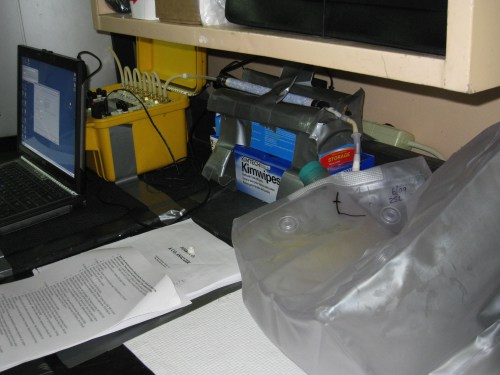
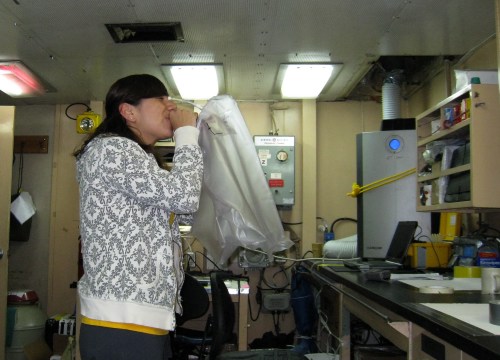
In order to help morale, I decided to bring out a surprise I had for the scientists and Coasties. A good friend of mine is a 5th teacher at Cherrywood Elementary in San Jose, California. Her class will be following along with the project and made bookmarks about climate change for the scientist aboard the ship. I spent a good portion of the morning finding all of the scientists and giving out the bookmarks. They loved them! They really appreciated the careful thought the 5th graders took in creating the bookmarks.
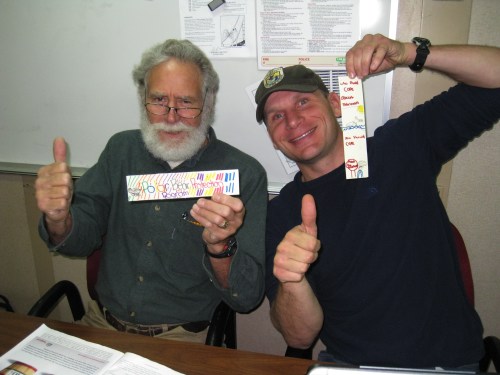
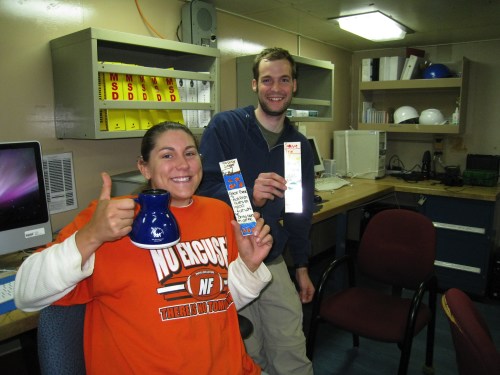
Sounds of the Arctic answer: The sound you heard on the last post has been driving us crazy on the boat for the first few days. In real life, it sounds much more like a chirping bird. However, we all know it can't be a bird. After some research, I found out that the device making that sound is a "bottom mapper." It sounds out sound waves towards the bottom of the ocean and listens for the echo. It analyzes the time from the sent sound to the received echo and uses the speed of sound in salt water to determine the distance that the sound traveled. (Impact students, sounds like a SPEED problem to me!)
The machines puts all the data points together to create a map of the bottom of the ocean according to depths.
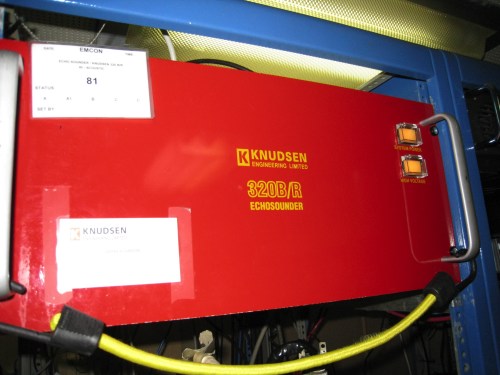
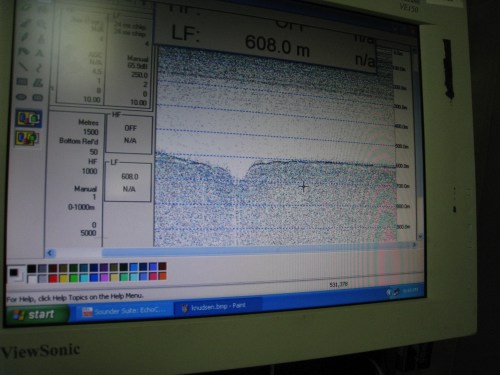


Comments